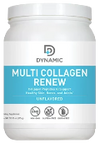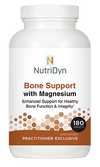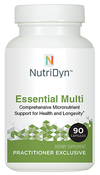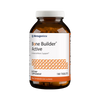How Food MayHelp Control Some Chronic Health Conditions
- News
- 19 Nov, 2019
Food can help control some chronic health conditions
And in some cases, it can even eliminate the need for drugs
Jill U. Adams Washington Post
If you have a chronic health condition — and about 60% of Americans live with at least one — you can use food to help manage your problem. Yet too many Americans don’t eat with their particular health demands in mind.
Those chronic conditions include hypertension (75 million Americans), high cholesterol (102 million), and diabetes or prediabetes (100 million), according to the Centers for Disease Control and Prevention.
Each of these conditions can be at least partially managed by good eating habits. Your overall diet matters, though many people pay little heed. Most guidelines say we should eat five or more servings of fruits and vegetables, but only 1 in 4 people actually does.
What are the dietary guidelines for health — and how might they differ for specific health conditions? And perhaps more important, how can people successfully change their eating patterns?
“From a clinical perspective, we do recommend diets based on somebody’s condition,” said Donald Hensrud, a physician at the Mayo Clinic in Rochester, Minnesota, who specializes in nutrition and weight management.
The various diets supported by scientific evidence have greater similarities than differences, Hensrud said. They emphasize real food — as opposed to processed food — and they’re mostly plant-based. These include the DASH diet, the Mediterranean diet and a vegetarian diet.
The DASH diet — Dietary Approaches to Stop Hypertension — may be the most widely researched, beginning with a 1997 study that showed the diet lowered blood pressure in people with hypertension.
Restricting sodium in the DASH diet produced greater reductions in blood pressure, although interpretation of that data is somewhat controversial, said Marla Heller, a registered dietitian who has written extensively about the diet.
“Some scientists noted that if you slice the data, the decreased sodium helped only one group — black women,” Heller said.
The first DASH diet trial allowed 3,500 milligrams of sodium a day, which is about 11/2 teaspoons of table salt, and showed benefits. And in the salt-restricted study, a high-sodium group was included for comparison and those people also benefited from the diet.
(The current recommendation for salt intake from the American Heart Association is 2,300 milligrams, which is about 1 teaspoon.) Sodium may be important, but it’s not the only thing that matters. “We’ve medicalized food too much. People eat real food,” said Heller, who wrote “The DASH Diet Action Plan.” She said it’s better to advise people on foods to eat, rather than be hyper-focused on nutrients and calories.
Heller also stresses foods to include, rather than what to avoid: Eat more fruits and vegetables, choose low-fat dairy, and include beans, nuts and seeds. “I focus on meal plans to provide examples of how to put together a healthy diet — and what you stock your fridge and cabinet with,” she said.
In addition to her five books, Heller hosts a Facebook group that has more than 29,000 members. “They support each other,” she said, offering ways they incorporate more vegetables into their meals, for example.
Hensrud wrote “The Mayo Clinic Diabetes Diet,” which recommends lots of fruits and vegetables and few animal products. There’s a two-week “lose it” phase, in which people try to add five good habits and break five habits. Habits to break include no eating while watching TV and no sugar, except for what’s in fruit.
After that, the guidelines are more general: Eat breakfast, eat fruits and vegetables, eat healthy fats, and move your body. “We’re not telling people what not to eat,” he said.
The DASH diet also is good for diabetes, Hensrud said, as long as overall calories are limited. That’s because the main controllable factor for diabetes management is body weight.
Karen Swanson was diagnosed with high cholesterol in 2010. Her doctor wanted to put her on a statin drug, but she parried. Could she try diet and exercise first? Her doctor recommended the DASH diet — which has been shown to be effective at reducing cholesterol levels. That prompted Swanson to do some research.
She discovered the importance of exercising 30 minutes per day and limiting her intake of saturated fats. Saturated fats are animal fats —from meat and full-fat dairy products. Also some oils, such as coconut oil and palm oil, are high in saturated fats.
A review of 15 studies found that cutting down on saturated fats lowered people’s cholesterol levels and decreased their risk of cardiovascular disease. “Personally, I find the DASH diet overwhelming,” Swanson said. For her, it felt easier to lower saturated fats than salt.
And it has worked for her — her cholesterol numbers went down in the first six months and have stayed relatively level in the nine years since. “It’s not perfect,” she said, but she has avoided statins.
Swanson began blogging about the strategies she’s learned, such as using soy creamer in her coffee instead of half-and-half, and eating gelato instead of ice cream. She also has a few go-to sauces — a green sauce and a mustard vinaigrette that she’ll put on everything from salad to a “boring chicken breast.”
There’s a misconception that dietary cholesterol is bad, which has led to confusion about eggs. “They’re high in cholesterol but not in saturated fat,” Swanson said. Indeed, the current USDA dietary guidelines do not set a limit on cholesterol consumption.
Swanson posts recipes on her blog at golowcholesterol.com, and she also wrote “The Low Cholesterol Cookbook and Action Plan: 4 Weeks to Cut Cholesterol and Improve Heart Health.”
Heller, a dietitian, said she has been getting more referrals from physicians.
“Doctors don’t have the time to go through the hows and whys, or to problem-solve with people,” she said. However, nutrition services are not always covered by health insurance.
Changing habits can be hard, but once people see results, such as lower blood pressure or looser clothes, those habits become self-reinforcing, Heller said.
“People don’t appreciate the powerful link among lifestyle habits, quality of life and their conditions or diseases,” she said. “It doesn’t have to be drudgery to change your lifestyle, to live a healthy life.”
Terms of Use
This website is dedicated to providing the highest quality information. To ensure that, each section is reviewed by physician(s) and, in certain cases, other experts with expertise in the area presented.
However, it is not possible to assure that this website contains complete, up-to-date information on any particular subject. Therefore, DrDirect4u and its representatives make no representations or warranties about the suitability of this information for use for any particular purpose. All information is provided "as is" without express or implied warranty.
No medical advice or referrals: The information posted here at DrDirect4u should not be considered medical advice and is not intended to replace consultation with a qualified health care practitioner. DrDirect4u will not answer specific medical questions or refer people to a particular health care professional.
No literature or Web searches: DrDirect4u does not conduct searches of the medical literature or of information contained on the World Wide Web for persons accessing this site and requesting such searches.
Note About Links: For the convenience of our users, DrDirect4u provides links to relevant websites. DrDirect4u and its representatives are not responsible for the content contained on the Web pages found at these links.
Copyright © Dr-Direct 2 U LLC













